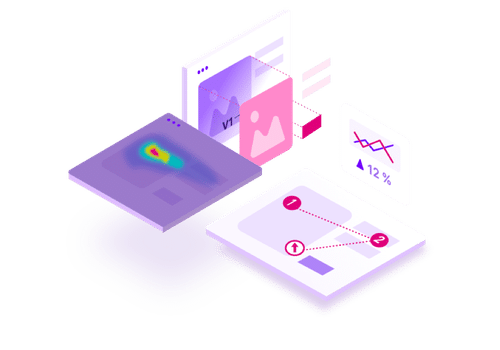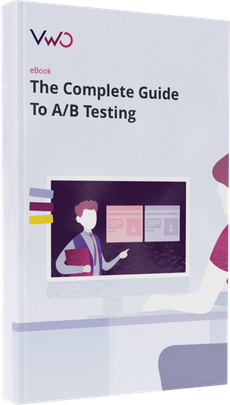Conversion Marketing: Breaking Down The Art and Science Behind It
You have a strategic and tactical marketing plan driving clicks to your website. All your steadfast focus on content, link building, programmatic advertising, influencer marketing & email campaigns are driving relevant traffic to you. However, your conversion rates appear to be stalling. Sounds eerily familiar?
Good news – you’re not alone. A study commissioned by CXL, the world’s authority on all things conversion optimization, revealed that more companies are increasing their focus on CRO than ever
Download Free: Conversion Rate Optimization Guide
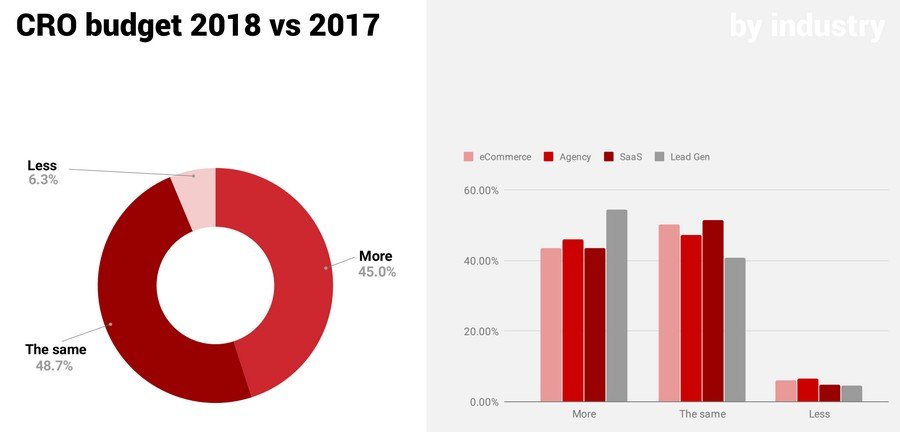
Image source: cxl
At VWO, the world’s leading conversion software, we feel that it’s our duty to educate readers about the reversal of fortunes that high-growth teams have demonstrated using conversion optimization as a part of their workflows. This article is an attempt to demystify how marketing teams should approach conversion optimization and its many building blocks to help you get started.
What is Conversion Marketing?
Conversion marketing encompasses the art and science of marketing with the aim of maximizing the percentage of visitors taking the desired action on your digital properties. A conversion marketing strategy includes tactics to make the most of the existing traffic on a website by optimizing its key elements to uplift conversions.
As a marketer, you might be juggling multiple hats. On one of your workdays, you might be hustling to build more backlinks for your pages, in others, you might be working with your design team for a shinier prototype for some of your web pages. And in between, you are assigned urgent copywriting tasks for your paid search campaigns. In between all this, should you even focus on conversion optimization? It’s a relevant question and begs an evidence-based answer.
Back in 2009 when Google couldn’t decide which shade of blue would generate the maximum clicks on their search results page; Marissa Mayer, then Vice President, Search Products & User Experience at Google, got her team to test 41 gradations between the two contenders to find out which one would receive the most clicks. Experts argued that testing something as trivial as the color could digress the UX teams from addressing more advanced, impactful changes.
However, for the world’s most popular search engine where a slight drop in conversion rate could translate to millions of lost dollars, experimenting with every little change that impacts conversions (clicks, in this case) seems justified, doesn’t it?
The power of conversion marketing lies in its ability to leverage a traffic base of millions to drive a significant uplift in revenue with a marginal (say 0.5%) uplift in conversions brought about by a minuscule tweak.
Before getting into the know-how of conversion marketing, let’s take a step back to understand what conversion rate is and how it can be dissected for various channels –
Defining Conversion Rate
Conversion rate is simply defined as the percentage of visitors to your website who complete the desired goal. A conversion can be anything from clicking a CTA button, and filling up a form, to making a purchase.
To streamline their marketing campaigns, marketers need to figure out and compare the return on investment for each of the channels they use to drive conversions. Therefore, one common way of viewing conversion reports is by segmenting them by the following traffic sources –
- Paid – Visitor landing on your website through paid promotions
- Organic Search – Visitors landing on your website organically through search results
- Direct – Visitors accessing your website directly by entering the URL into a browser
- Social – Visitors landing on your website through social channels
- Referral – Visitors coming to your website from other domains
- Email – Visitors coming to your website through email marketing campaigns
There are many ways in which marketers can analyze conversion data by channels and sources. To talk about all of them warrants a dedicated blog post, but for curious readers who would want to take a peep into the mechanics behind it all, we would like to suggest this informative video that lays bare all you need to know about dissecting conversion data by sources in Google Analytics.
For example, according to Episerver’s B2C Dot Com report that tracked 1.3 billion unique shopping sessions across 159 unique retail and consumer brand websites, organic and paid search had the highest conversion rates while social media and display ads performed the poorest:
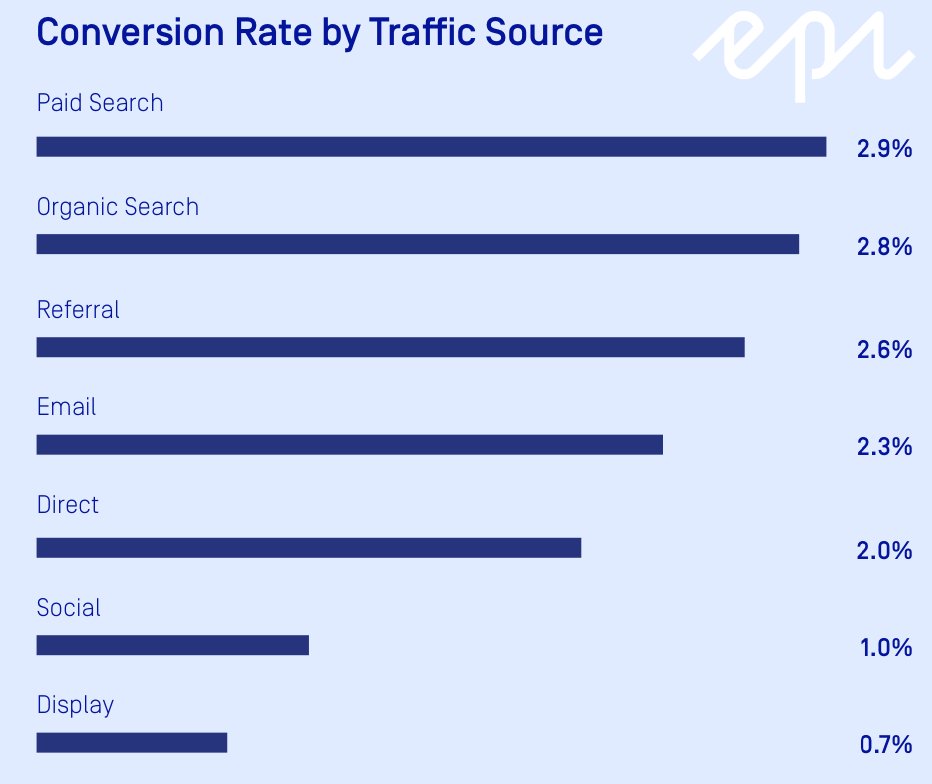
Similarly, you can dissect conversion trends for your website by channel and re-align your marketing efforts accordingly to double down the focus on sources that could use some improvement.
Instruments Used by Marketing Teams to Boost Conversion Rates
Website Surveys
A CRO tool that can prove to be pivotal in helping unlock the Voice of Customer (VoC), website surveys allow you to glean real-time qualitative feedback directly from your visitors while they’re at your digital properties. By asking the right set of questions and triggering the survey at the right time, you can get insights on what’s working well on your website and learn about your visitors’ apprehensions, so you can streamline your optimization efforts accordingly and nudge them down your sales funnel.
Heatmaps
Heatmaps offer a visual representation of your visitors’ interaction with your website – elements that draw their attention, those that distract them, and, therefore, help you unlock a goldmine of insights on their behavior. Different heatmaps are used to churn out a range of visitor behavior insights. Clickmaps, for example, arm you with real-time data on the most and least-clicked sections of your website so you can figure out the critical action areas and make tweaks to the design and content accordingly. Scrollmaps, on the other hand, tell you till what point in your website visitors are scrolling, so you don’t end up placing an important banner or a CTA in the last fold that doesn’t attract as much attention.

Customer Calls
If you’re in the B2B/SaaS business, analyzing customer calls can be a great way to better understand a typical customer journey on your website. Using the insights gathered, you can refine your suspect personas, discover new friction points, understand the solutions your customers are looking for, and much more, that can constantly be fed into your marketing strategy to make it more robust and consumer-centric.

Customer Support Tickets
Scanning customer support tickets for relevant insights on visitor behavior and their hesitations can be useful in helping you discover some fresh customer pain points that may not have been obvious otherwise. You can get a sneak peek into the most-commonly faced issues on your website that are hampering visitors’ experience and possibly preventing them from converting.

Session Recordings
Another qualitative research tool, session recordings, allows marketers to understand browsing behavior by watching recordings of visitors’ entire interaction with their website over a particular session. It empowers marketers to granularly assess visitors’ preferences, and how they navigate on the website, and determine friction points in their journey, which they can fix to improve the quality of their customer experiences and amp up their critical metrics.
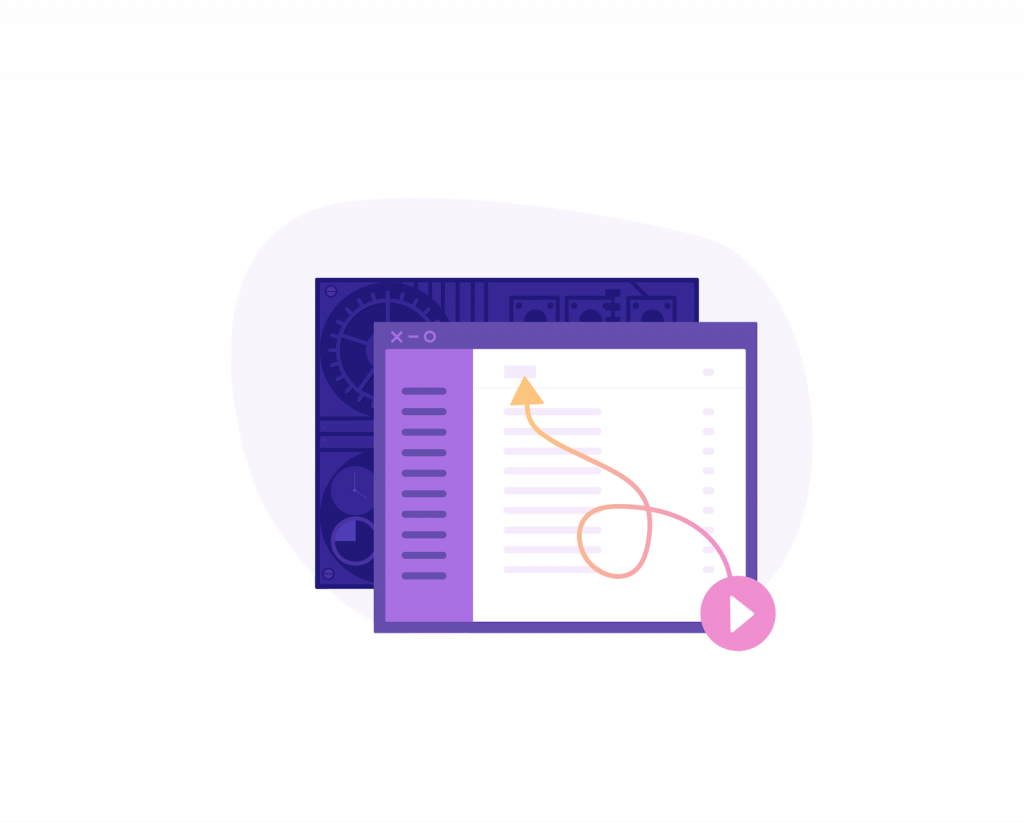
A/B Testing
To constantly outdo your website customer experience, you need an iterative, data-driven solution that proves why one version of your webpage works better than the other. A/B testing allows marketers to form hypotheses based on analytics and insights gathered from user research, create multiple versions of their webpage and then test them on various visitor segments to compare which variant drives more conversions. Constantly experimenting with different elements of your website can help you streamline your optimization pipeline and drive better results.
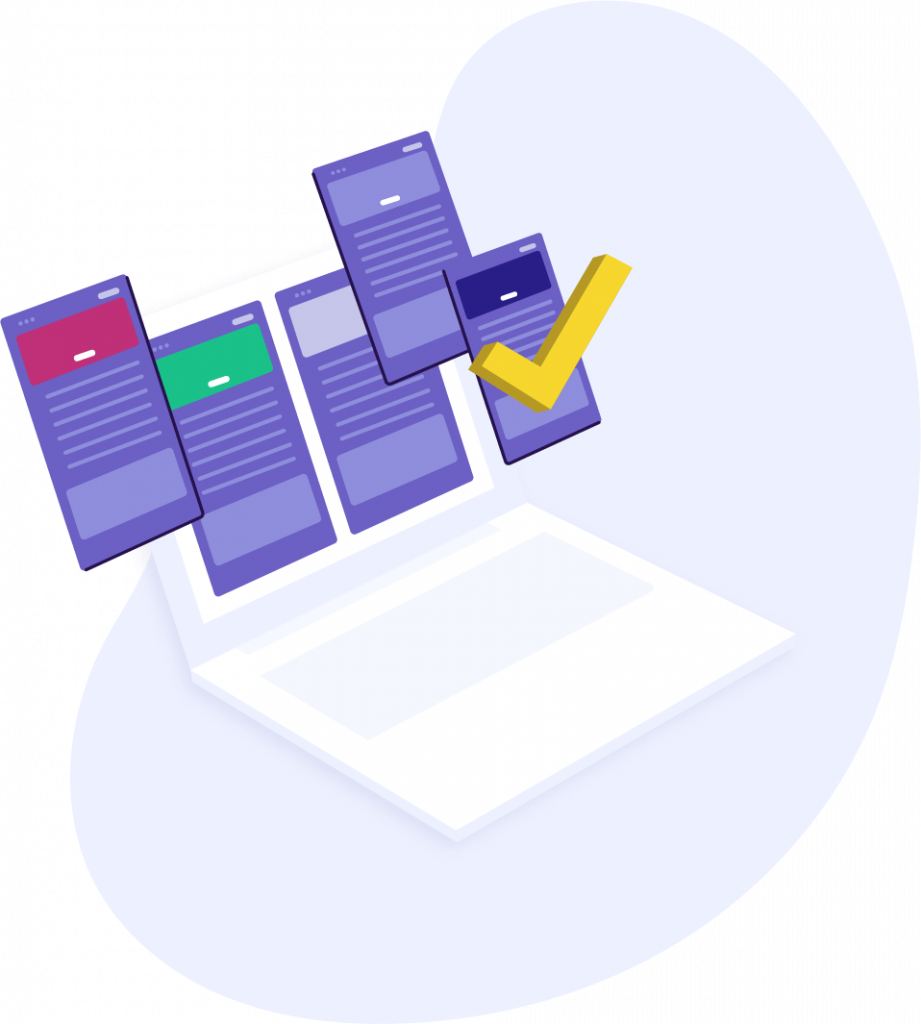
Form Analytics
Form analytics helps marketers dissect users’ interaction with their forms and churn out insights on why their forms are performing the way they are. From the total time taken to fill the form and the idle time spent on a form field to fields that were refilled, ignored, or dropped; form analytics helps marketers measure the quality of their forms and identify plausible friction points, so they optimize the same for a smoother experience and better conversion rate.
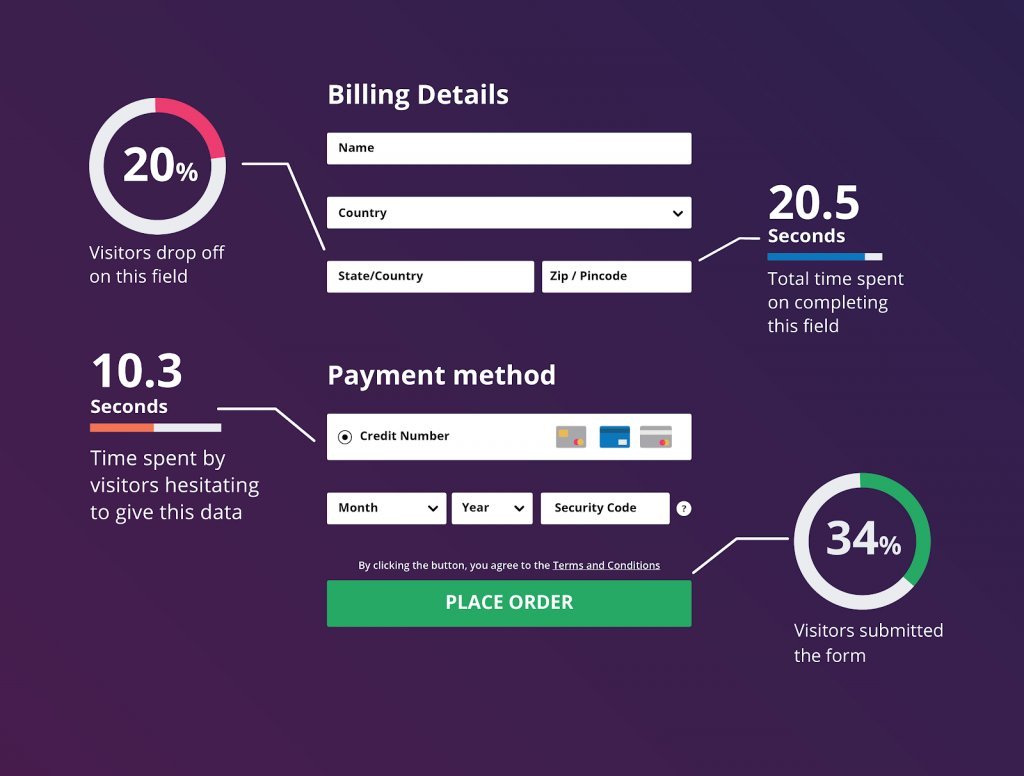
Download Free: Conversion Rate Optimization Guide
Low-Hanging Fruits to Improve Conversion Rate
While the list of strategies to improve conversions on your digital properties is nearly endless, this section offers some actionable tactics that are a good place to start.
Test and Optimize Your Landing Pages
Since landing pages are built dedicatedly to receive and convert a particular segment of your audience, optimizing them could directly and significantly impact your conversion rate. Therefore, make sure you continually test every element in your landing pages to ensure it nudges the visitor towards the CTA. To begin with, you could get rid of all distracting elements, test the headline, copy, and color scheme of the page as well as the number of form fields, remove navigation and keep the page single-fold.
Here’s an example of Slack’s landing page that comprehensively states how teams can use the product without driving attention away from the CTA:
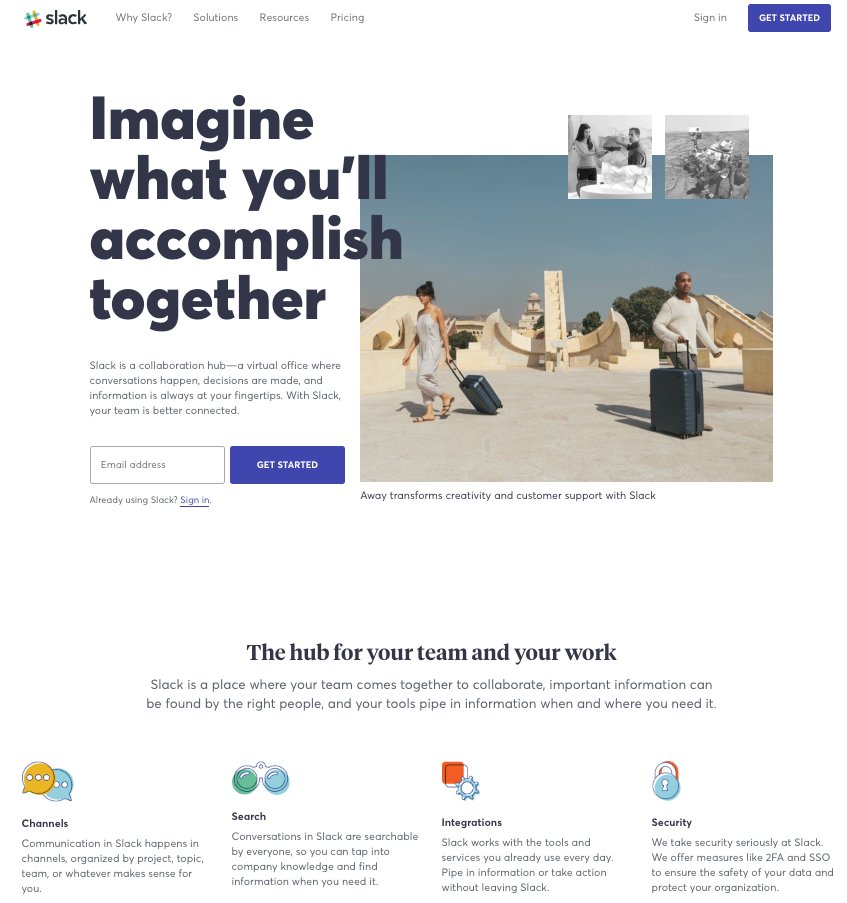
Improve Your Site Navigation
Driving a massive amount of traffic to your site would be futile if those visitors find it difficult to actually navigate through it. Therefore, ensuring getting around your site is frictionless becomes primary before you expect them to take the desired action. To do so, try to declutter your website as much as possible and keep the design minimalistic so as to draw visitors’ attention to the critical elements. Follow the convention when it comes to certain sections of your site, such as having contact information on the top right and the help section in the footer, so visitors don’t struggle to get basic stuff done on your site and find it familiar. If you have an eCommerce store, make sure your search bar is easily-accessible and omnipresent, so that looking up products can be done seamlessly. Moreover, make sure your site is mobile responsive; follow best practices to optimize your site for mobile experiences such as doing away with the navigation bar, reducing the number of form fields in the first step, and so on.
Here’s a look at the menu bar of Kiehl’s mobile website that perfectly lists all its products and makes navigating to a particular type extremely simple:
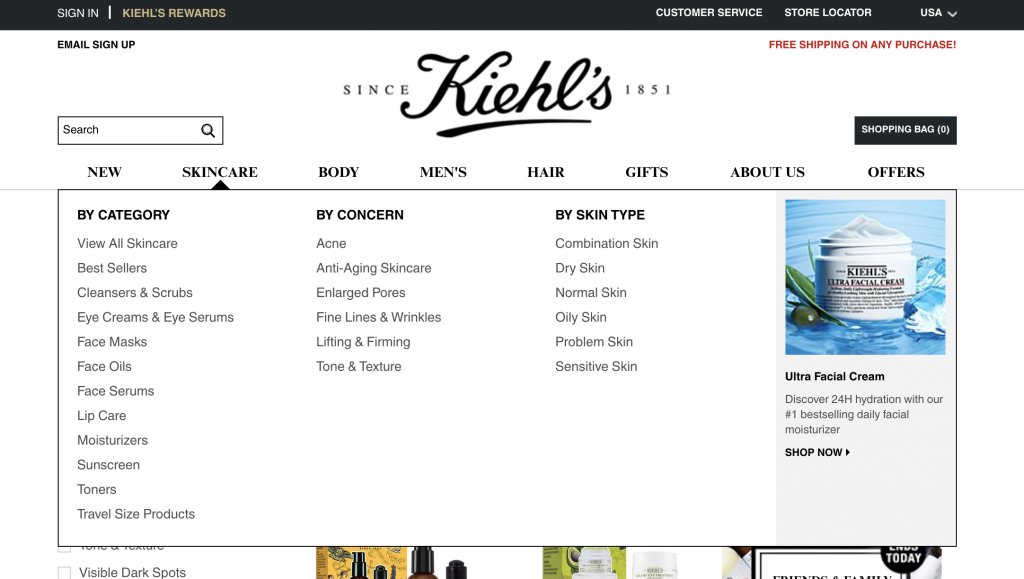
Improve Page Load Times
With so much noise on the internet begging for attention and ever-diminishing human attention spans, nothing kills user experience like a slow website. If your site has a higher-than-average load time (10.3 seconds for the web and 27.3 seconds on mobile), your visitors are probably losing the patience to stick around to go through your offerings. So, in case you aren’t constantly monitoring your web and mobile sites for performance, you are giving away countless conversion opportunities. In fact, a decade ago, Amazon discovered that with every 100 ms increase in load time, their sales were seeing a drop of 1%.
To decrease your load time, you could start by optimizing your images, consider using a Content Delivery Network (CDN), use external hosting platforms for large media files, and enable caching.
Ensure Your Value Proposition is Clear and Compelling
Crafting an impactful and promising value proposition to feature on your homepage, product pages, or landing pages, can help you set yourselves apart from the competition and immediately grab your visitors’ attention. Make sure it highlights your USP, yet talks directly to your ideal target prospects. If you’re lucky, the perfect copy could be lurking in plain sight; however, for most marketers, it’s a matter of trial and error. So, don’t shy away from testing continually until you land on one that positively impacts your key metrics. Some best practices to follow would be to keep it concise and easy to understand, and completely avoid jargon as it could put people off.
Khan Academy highlights its value proposition brilliantly while keeping it short and clear:
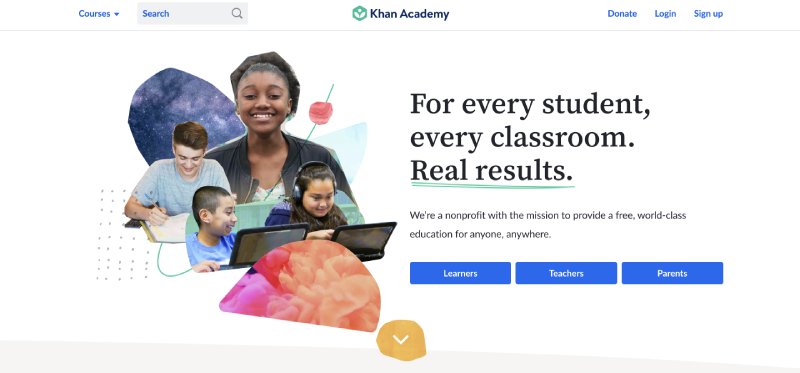
Use Videos to Engage Better
Enough has been said about the efficacy of videos in creating impact, engaging with visitors, and holding attention. With video being the preferred medium for information consumption among your audience, you’re probably losing out on a lot of traction by not having a robust video marketing strategy. Therefore, consider replacing written text or images with videos as and where possible and see if this impacts your key engagement and conversion metrics. For instance, instead of just having images on the product pages of your eCommerce store, consider adding videos of the product in use. Or try adding a preview video of the webinar you are going to host on its sign-up page.
ASOS uses 360° videos on its product pages to help people better assess products and convert quicker:

Optimize Your Forms
Popular to contrary belief, reducing the number of form fields does not necessarily guarantee a higher conversion rate. What you can do instead to have a fair shot at improved conversion metrics is do away with all unnecessary fields or combine them if possible to avoid putting off visitors, have a progress bar indicator for longer forms, and experiment with required and optional fields to find out which ones are absolutely necessary and can’t be done without. Moreover, you can use form analytics to uncover visitor friction points so you can rightfully assess the quality of your forms.
Critical Conversion Metrics You Should be Tracking
- Bounce Rate
The bounce rate is an indicator of the quality of experiences your website offers. A high rate could often indicate poor usability, slow load times, unengaging content, technical errors, and much more. Therefore, when optimizing for conversions, bounce rate is one of the primary metrics you should be tracking and looking to improve as you can only get your visitors to convert once they are sufficiently engaged and spend enough time on your site.
- Traffic Sources
It’s important to be aware of how each of your traffic acquisition channels is performing, so you always have a direction in which you need to reorganize your efforts to have a steady flow of visitors. For example, if visitors coming in via social and email only constitute 3% and 2% of your total traffic respectively, you will probably have to revisit your social media strategy, improve the content of your weekly newsletters and other email campaigns, and so on.
- Interactions Per Visit
Whether or not they convert, tracking how a visitor interacts with your site can glean some fruitful insights that you can leverage to optimize your experiences. The number of pages visited, the amount of time spent on a particular page, whether or not comments were left on blogs, and similar interactions can help you understand visitors’ behavior on your site, get a glimpse of their hesitations, and figure out what is working well. All of these insights can be good fodder for crafting promising hypotheses.
- New Visitor Conversion Rate
It’s safe to assume that first-time visitors’ behavior on your site is drastically different from that of repeat visitors. Therefore, even conversion rates for the two need to be analyzed separately. A new visitor conversion rate will tell you about the first impression your site leaves, whether or not it gets new prospects interested, how effectively your content engages with them, how it performs in terms of usability and functionality, and so on.
- Repeat Visitor Conversion Rate
Given that 40% of an eCommerce store’s revenue comes from repeat purchases, one cannot undermine the criticality of effectively marketing to return visitors. Even when it comes to subscription-based businesses, return visitors are more likely to convert than first-time visitors. Therefore, analyzing this metric will help you assess how effectively your site is engaging with visitors familiar with your brand and engaged enough to return to your site.
- Form Abandonment Rate
Form abandonment rate will help you assess and optimize your forms to offer a frictionless filling experience. If your form abandonment rate is high, you can be sure that your form needs attention, which will save you from needlessly deploying resources to optimize other elements of your landing page or checkout process.
Tools You Can Use to Get Started With Conversion Marketing
VWO
VWO is a connected, experience optimization platform that offers qualitative and quantitative research as well as full-scale experimentation capabilities. You can use VWO Insights’ Heatmaps, Session Recordings, and On-Page Surveys to uncover qualitative insights on your visitors’ behavior, understand user friction points, and gather customer feedback – which can be used to outdo your current experiences and double down on what’s working well. Using VWO A/B Testing, you can test any element on your website by creating versions of your web pages and deploying winning variations to strategically improve your site’s conversions.
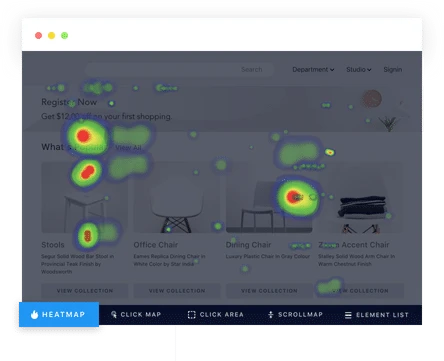
Unbounce
Unbounce is a landing page optimization platform that helps you create, test, and optimize custom landing pages, pop-ups, and sticky bars for improved conversions with a drag-and-drop builder.
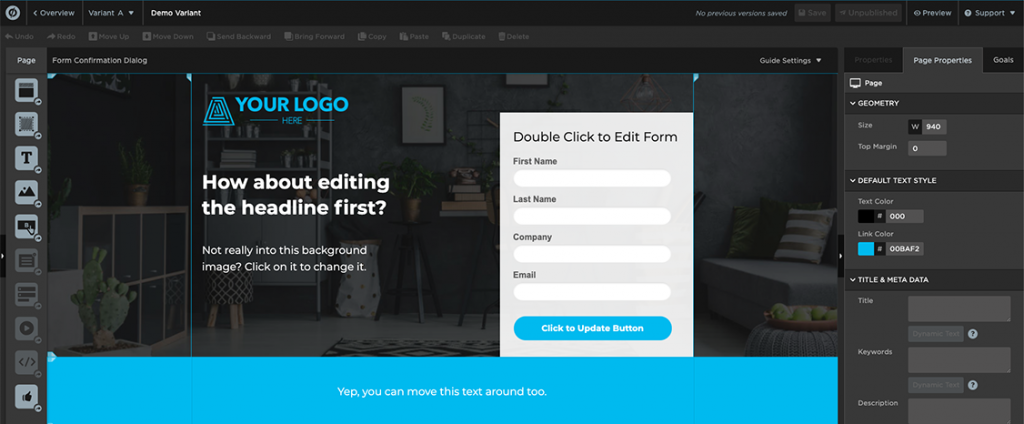
Google Analytics
A free tool to track all your website activity, Google Analytics helps you analyze your site traffic in-depth and arms you with data on your traffic sources, bounce rates, session duration, conversion rate, keywords’ performance, and so much more. You can slice and dice your reports to create segments that help you analyze a particular set of visitors for your critical metrics. You can uncover demographic and behavioral attributes of your visitors that can help you draw valuable insights into their interactions with your website.
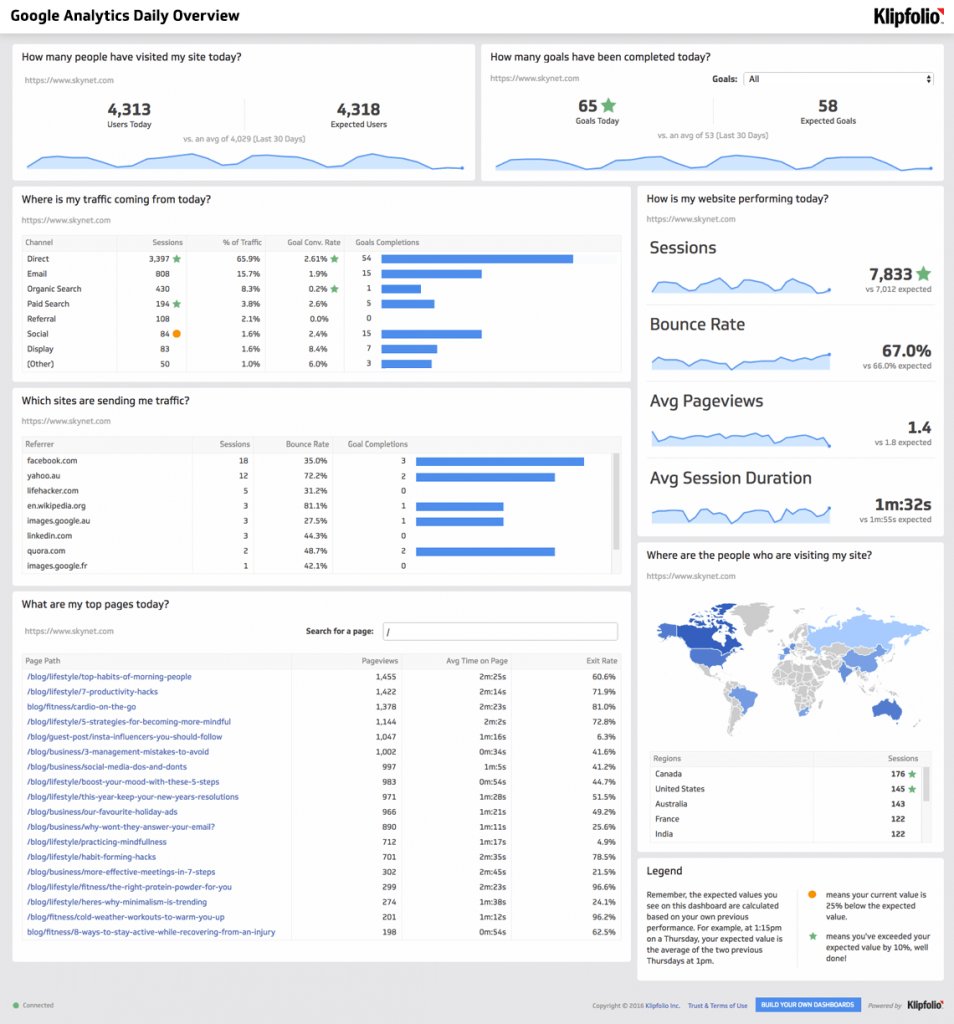
GTmetrix
A tool built for analyzing your website performance, GTmetrix, allows you to discover your site speed along with opportunities for optimization. Along with receiving a detailed breakdown of your site’s performance, you also get to track it over time and across devices and receive timely notifications on your page load speed. Using these insights, you can make quick fixes to your site and watch its performance improve.
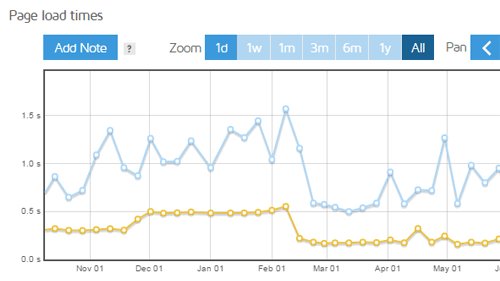
Conclusion
In today’s day and age where improving marketing ROI is a colossal challenge facing businesses across the globe, conversion marketing becomes an indispensable strategy. While you’ll find numerous tips in every digital marketing playbook, finding success in conversion marketing is an iterative process that depends largely on the amount of effort you put into understanding your audience, telling a compelling story, and offering delightful experiences. As you optimize your way to improve conversions, don’t forget to test as many ideas as possible – you might just end up surprising yourself.



